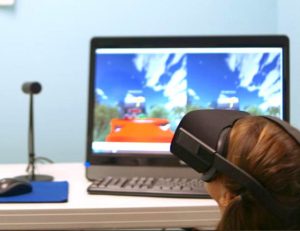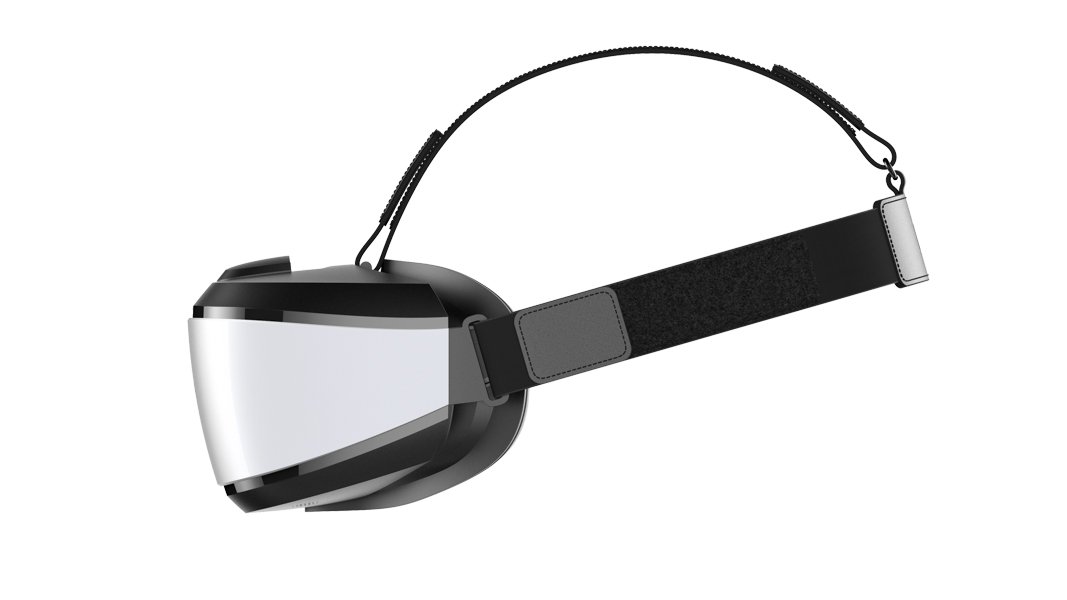
VR headset technology and software is evolving at a rapid rate. Forward-thinking medical practitioners, hospitals, clinics or pharmaceutical brands are beginning to use VR technology for patient treatment, training and education. Vivid Vision uses DPVR VR headsets as part of their eye treatment programs. Ceragem uses our VR headsets as part of their music therapy treatments for stress relief and relaxation for patients.
In other examples our headsets are used for training staff on new procedures, how to use equipment or to learn new protocols.
At DPVR we are ready to fulfill any particular requirement. Our head mounted VR displays are designed for the highest level of performance and quality in mind. There are tons of different ways to elevate your use of VR for medical practices and we can help prepare applications from scratch or you could use your software integrated with our hardware.

PREMIUM SUPPORT
Engineers, technicians and support personnel ready to guide you
HYGIENIC USE
The face sponges are easy to replace and clean to maximise hygiene levels.
CUSTOMISATION
We can customise the casing logo, system logo, user interface and language to suit any use.
LOGISTICS
We can facilitate fast fulfilment and operational logistics.
HIGH QUALITY
Our headsets are lightweight, easy to use but built to be durable and reliable for regular use.
CONTENT MANAGEMENT
Wired, wireless or single media modes creates easy content management solutions.
VR headsets for music therapy treatment
Content can be created using a VR headset that is streamed or shared with an audience. Ceragem uses this method as part of their patient treatment plans to provide musical therapy treatment.
Virtual reality vision treatment for lazy eye
Vivid Vision uses DPVR headsets to help patients with lazy eye treatment. They have a range of virtual reality games that are used to help adjunct treatment for amblyopia, strabismus and vergence disorders. Great for when binocular vision treatments don’t work and they are used at home or in a clinic.
Occupational health & safety training using virtual reality headsets
OH&S is one of the most important areas that every business must address. VR headsets can be used to ensure regular updates are available as well as virtual environments created to turn theories into ineractive experiences.
Team training for products or services using virtual reality headsets
Small group training can be completed using virtual reality headsets to ensure each individual receives all the necessary materials. The benefit is a high level of interactivity and immersive content can be delivered that keeps participants engaged for longer periods of time.
The virtual reality world breaks the boundaries between the physical world and the digital world. With smart wearable devices, it is possible for it to quickly and accurately provide relevant solutions based on the specific environment.
It is increasingly evident that virtual reality is a valuable tool in assisting medical imaging, surgery, clinical treatment, telemedicine, health, and medical education, as well as promoting the further advancement of Precision Medicine.
Our P1 wireless headset even has customisable modules like a brain computer interface or heart rate monitor amongst other options that can be used with patients.
DPVR manufactures both PC tethered and Wireless VR Headsets that an be adapted to suit hospital or medical environments. The recently announced P1 Ultra has customisable modules that can provide data for different bodily functions.
There is no doubt that the medical and health field is one which nurtures innovation and technology deeply. As AI, Cloud Technology, big data, 5G, and intelligent robots move into the medical and health industry, they have gained importance in many fields that are related to health such as drug research and development, auxiliary diagnosis, treatment, health management, wearable devices, and virtual assistants.
Using DPVR VR headsets enables accurate diagnosis and treatment. Although the application of virtual imaging technology in the healthcare sector has only just begun, it is expected there will be many different disruptive changes in the medical field and associated services in the near future.
“Cutting-edge medical technology allows clinical medical workers to implement more effective and better healthcare services on the basis of previous experience. The use of big data in medicine, virtual reality, artificial intelligence, and even medical robots and other scientific and technological advances provides doctors and patients with more precise and accurate medical treatment. To cultivate better medical workers in the future and prepare for the deeper changes in medical technology, we still need to move on .”
Zhang Jiyang, Zhongshan Hospital Affiliated to Fudan University and Director of Big Data Artificial Intelligence Center.
Training & education for hospital teams
With the help of VR-based 3D virtual image technology combined with medical image data, the traditional 2D image is transformed into a 3D image, allowing doctors to observe, measure and perform operations from all angles simultaneously. They are able to analyze thoroughly the details of the lesion, the anatomical features of the surgical site, and the surrounding surrounding tissues in the virtual model, and they can view the actual surgical operation through the first-person view, which greatly improves the effectiveness of the operation.
Osso VR is a company from Boston, dedicated to providing surgical training and assessment using VR technology. Osso VR has developed a platform where Surgeons and hospital staff can train together in the same virtual operating room. And doctors can join expert surgeons from around the world in virtual training sessions to learn best practices and techniques. There are 120 training modules on the platform and they are building a VR surgical training library.
Remote consultations in a virtual world
The main functions of telemedicine include remote consultations, remote surgeries, remote monitoring, and chronic disease management. VR is an ideal application for 5G networks which are extremely fast, highly scalable, and have low latency. Wearing VR headsets, medical workers can broadcast live video from the first-person perspective in real time. The participants are able to use voice commands on their phones to retrieve and capture medical records at the same time as communicating with external experts.
XRHealth is a virtual clinic that provides engaging treatments without having to leave home. Doctors can remotely monitor patients and provide patients with customized rehabilitation programs via VR headset. Normally it is suitable for the following conditions: multiple sclerosis, menopause, anxiety, chronic pain, stroke rehabilitation, brain injury, etc. It can provide patients with an immersive and interesting experience, so as to provide patients with treatment positivity.
Remote consultations in a virtual world
VR technology has a great deal of advantages when it comes to assisting the treatment of mental illnesses. In the virtual environment of VR, it is possible to eliminate the uncertainty in psychotherapy. The VR glasses allow the patients to easily enter the simulated environment set by the doctor and to try to overcome their own psychological obstacles with the help of the doctor’s guidance. In essence, psychotherapy is a process of allowing patients to enter the environment that causes their emotions and learn new ways of thinking and feeling to help them improve their symptoms. It has the ability to simulate various situations and to allow patients to repeatedly interact with the virtual environment, making VR a more effective means of treating mental illness than traditional approaches.
As of today, VR therapy is used to treat post-traumatic stress disorder (PTSD) of veterans, phantom limb pain of the disabled, hyperactivity in children, autism, cognitive dysfunction, etc. VR therapy has blossomed in regard to treatment for mental illness, according to public information available over the Internet. DPVR has been cooperating with Beijing Anding Hospital, Shanghai Mental Health Center, and Hunan Xiangya Hospital to conduct VR mental state assessment for the past four years, and more than 5,000 people have attended the assessment.
Psious is a virtual reality therapy platform for mental health professionals. It includes the treatment of anxiety (phobia, panic, post-traumatic stress disorder), stress management, depression and attention problems (such as hyperactivity, autism, mental disorders, etc.). So far, over 70 countries and 20000+ patients have been treated by Psious.
Unique ways to improve eyesite with VR
People around the world are able to improve their vision with VR headsets, which help to correct muscle imbalances, as well as improve the situation of people with impaired vision. As a result, people can perform clinical treatments at home, saving both time and money for both patients and clinics. There has been much use of this method in identifying strabismus (eye muscle imbalance), assessing binocular vision, treating amblyopia (blurred vision), and treating astigmatism (inability to align two eyes at the same position).
VR is also bringing benefits to people who have lost their sight and are unable to recover it. The VR headset that is specifically designed for people with eye and vision problems such as macular degeneration, glaucoma, and retinitis pigmentosa includes a built-in adjustment function that enables them to zoom in and out to suit their viewing needs.
Vivid Vision, our partner, is a company focused on taking key insights from vision science and applying them to make usable, fun vision tests and treatments. They also made a VR solution of treating amblyopia and strabismus for eye clinics. The key method they use is pushing the weak eye to focus on a spot that is different from another eye. The weak eye needs more practice than the normal eye so that both eye could work together.
Interactive training for students or staff
Studies have shown that VR immersion training is more effective than reading or watching videos for learning courses like anatomy, surgery, and so on, when compared to learning via reading or watching videos. A virtual reality version of a so-called “real” patient will be able to replace the tradition of bulky human simulators in classrooms by displaying various symptoms and signs that students may encounter during their clinical experience. Medical students can also practice their procedures in a simulated manner under the supervision of a real patient during this “real-life” experience.
FundamentalVR is a medical education platform delivering multimodal simulation and education across tethered and all-in-one VR, mixed reality and mobile, harnessing the very latest AI techniques. It has acquired educational accreditation from leading medical institutions such as the AAOS and Royal College of Surgeons England. Full force-feedback kinesthetic haptics, high-fidelity visuals, and 3D spatial technologies are used in the platform.
This allows surgeons to receive tactile input when engaging with soft tissue on a virtual body, allowing them to manipulate and feel anatomy as if they were in the operating room. This greatly improves the study efficiency of students and professional.
DPVR have designed a range of wired & wireless VR headsets that are suitable to be used for all types of purposes. Our product range has wireless and wired choices that can be adapted to suit any type of application for small or large groups of people to receive content via virtual reality in any Country in the world.
Get the latest news from DPVR
© Copyright DPVR
